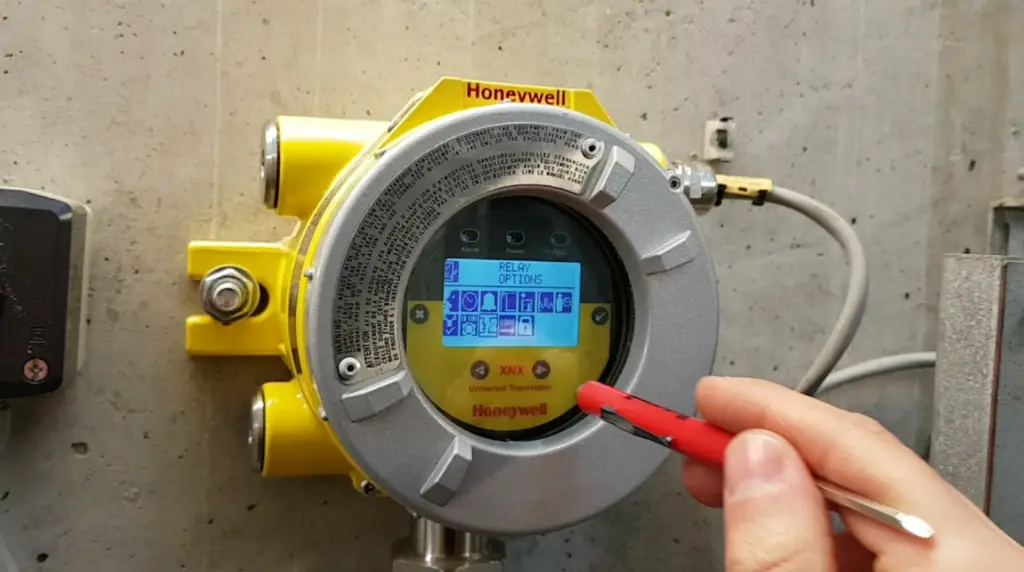XNX Gas Detector Calibration 2022: Price and Process in the Dominican Republic, Gas detection is a crucial component in ensuring safety in various industrial environments, including oil and gas, mining, chemical processing, and manufacturing. The XNX gas detector is renowned for its versatility and reliability in detecting multiple gases,
thereby enhancing workplace safety. This article delves into the calibration process for XNX gas detectors, focusing on the 2022 pricing landscape in the Dominican Republic. By exploring the intricacies of calibration, the importance of regular maintenance, and the factors influencing costs, this article aims to provide a comprehensive understanding of the subject.
Understanding XNX Gas Detectors
Overview of XNX Gas Detectors
The XNX gas detector is a robust and flexible gas detection solution that supports various sensor types, including catalytic bead, infrared, and electrochemical sensors. Its modular design allows for easy integration into existing systems, and its versatility makes it suitable for detecting a wide range of gases, including oxygen, toxic gases, and combustible gases.
Features and Benefits
- Versatility: The XNX gas detector can be configured to detect multiple gases, making it an ideal choice for diverse industrial applications.
- Modular Design: Its modular design facilitates easy installation, maintenance, and upgrades.
- Reliability: Built with high-quality materials, the XNX detector offers robust performance even in harsh environments.
- User-Friendly Interface: The intuitive interface simplifies operation and reduces the need for extensive training.
- Compatibility: It is compatible with various communication protocols, enhancing its integration capabilities.
Importance of Gas Detector Calibration
Calibration ensures that the gas detector provides accurate readings, which is critical for maintaining safety in hazardous environments. Regular calibration adjusts the detector’s response to known concentration levels of gas, ensuring its accuracy and reliability.
The Calibration Process
Why Calibration is Necessary
Gas detectors are subject to environmental factors such as temperature, humidity, and exposure to contaminants, which can affect their accuracy over time. Calibration compensates for these changes and ensures that the detector’s readings remain precise.
Steps in Calibrating XNX Gas Detectors
- Preparation: Gather all necessary tools and equipment, including calibration gas, a regulator, tubing, and calibration software.
- Zero Calibration: Set the detector to zero by exposing it to a zero-gas (clean air) environment.
- Span Calibration: Introduce a known concentration of calibration gas to the detector. Adjust the detector’s readings to match the known concentration.
- Verification: After calibration, verify the detector’s accuracy by exposing it to a different known concentration of gas.
- Documentation: Record the calibration results, including the date, gas concentrations used, and any adjustments made.
Calibration Frequency
The frequency of calibration depends on several factors, including the type of gas detected, the operating environment, and manufacturer recommendations. Generally, it is advisable to calibrate gas detectors every six months to ensure optimal performance.
Pricing of XNX Gas Detector Calibration in the Dominican Republic (2022)
Factors Influencing Calibration Costs
- Type of Gas Detector: Different models and configurations of XNX gas detectors may have varying calibration costs.
- Calibration Frequency: More frequent calibrations may lead to higher cumulative costs.
- Service Provider: The choice of calibration service provider can significantly influence the price due to variations in service quality and pricing structures.
- Location: Geographical factors and logistics in the Dominican Republic can affect the cost of calibration services.
- Additional Services: Some providers may offer additional services, such as maintenance and sensor replacement, which can impact the overall cost.
Average Cost of Calibration in 2022
In 2022, the cost of calibrating an XNX gas detector in the Dominican Republic typically ranged from $200 to $500 per unit. This range reflects variations in the factors mentioned above. Service providers may offer package deals for multiple units, which can reduce the per-unit cost.
Breakdown of Costs
- Labor: The time and expertise required for calibration.
- Calibration Gas: The cost of calibration gases, which vary depending on the type and concentration of gas.
- Equipment: The use of calibration equipment and software.
- Documentation and Reporting: The administrative costs associated with recording and reporting calibration results.
Choosing a Calibration Service Provider
Key Considerations
- Certification and Accreditation: Ensure the provider is certified and accredited to perform gas detector calibration.
- Experience and Expertise: Look for providers with a proven track record and expertise in calibrating XNX gas detectors.
- Service Quality: Consider the quality of service, including the thoroughness of the calibration process and the accuracy of the results.
- Customer Support: Reliable customer support is crucial for addressing any issues that may arise during or after calibration.
- Cost: Compare pricing among different providers, but do not compromise on quality for lower costs.
Recommended Providers in the Dominican Republic
- Safety Solutions DR: Known for their expertise in gas detection systems and comprehensive calibration services.
- ProSafety Dominicana: Offers competitive pricing and high-quality calibration services with a focus on customer satisfaction.
- GasTech Services: Provides reliable calibration services with a strong emphasis on accuracy and thoroughness.
Best Practices for Maintaining XNX Gas Detectors
Regular Maintenance
- Routine Inspections: Conduct regular visual inspections to check for any signs of damage or wear.
- Sensor Replacement: Replace sensors as recommended by the manufacturer to ensure continued accuracy.
- Cleaning: Keep the detector clean and free from dust and debris that could affect its performance.
Record Keeping
Maintain detailed records of all calibration and maintenance activities. This includes the dates of calibration, the gases used, and any adjustments made. Proper documentation helps in tracking the detector’s performance and scheduling future calibrations.
Training
Ensure that personnel responsible for operating and maintaining gas detectors are adequately trained. This includes understanding how to perform basic checks, interpret readings, and respond to alarms.
Challenges and Solutions in Gas Detector Calibration
Common Challenges
- Environmental Interference: Dust, humidity, and temperature fluctuations can affect calibration accuracy.
- Access to Calibration Gases: Obtaining the correct calibration gases can be challenging, especially in remote areas.
- Technical Expertise: Ensuring that personnel have the necessary expertise to perform accurate calibrations.
Solutions
- Controlled Environments: Perform calibrations in controlled environments to minimize interference.
- Reliable Suppliers: Establish relationships with reliable suppliers for a consistent supply of calibration gases.
- Training and Certification: Invest in training and certification programs for personnel to enhance their technical expertise.
Future Trends in Gas Detector Calibration
Technological Advancements
Advancements in technology are driving improvements in gas detector calibration. These include automated calibration systems that reduce human error and increase efficiency. Integration with digital platforms for real-time monitoring and reporting is also becoming more prevalent.
Environmental Considerations
With increasing focus on environmental sustainability, there is a growing trend towards using eco-friendly calibration gases and reducing waste in the calibration process.
Regulatory Changes
Regulatory standards for gas detection and calibration are continually evolving. Staying abreast of these changes is essential for compliance and ensuring the safety of industrial environments.
Conclusion
Calibration of XNX gas detectors is a vital process that ensures the safety and reliability of gas detection systems in industrial environments. Understanding the calibration process, recognizing the factors influencing costs, and choosing the right service provider are crucial for maintaining accurate and reliable gas detection. In the Dominican Republic, the 2022 pricing landscape for XNX gas detector calibration reflects the complexity and importance of this service. By adhering to best practices and staying informed about future trends, industries can enhance their safety protocols and ensure a secure working environment.
Regular maintenance, proper training, and a commitment to quality calibration are key to the effective operation of XNX gas detectors. As technology and regulations evolve, staying updated with the latest advancements and standards will help industries maintain their safety measures and protect their workforce.

